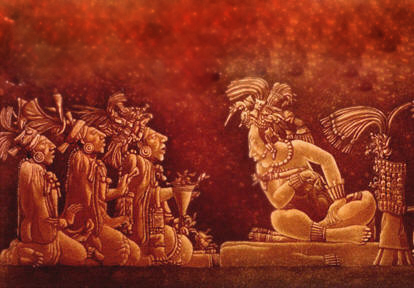They also had a huge collection of literary and artistic works, all documented in codices, monuments and paintings. Unfortunately, most of these documents were destroyed by the Spanish during the conquest, mainly by Christian missionaries determined to get the Indians to rejected their beliefs, and so impose the Catholic religion upon them.
As happened with the library of Alexandria, the Spanish, in one single flash, put an end to invaluable ancient knowledge as well as an entire culture that would today be on par with the Egyptian, Roman or Greek. Ironically, years later missionaries gave themselves to the task of rescuing some of the indigenous traditions and documents about the literature and art of those cultures, as was the case with the Popol Vuh.
In the eighteenth century, Padre Fray Francisco Ximenez, of the Dominican Order, came to the village of Chichicastenango, Guatemala, where the ancient tradition of the Quiche Maya still prevailed. Thanks to his kind and understanding spirit, the priest won the esteem of the population and in gratitude; he was allowed to become acquainted with a book that was written in the Quiche language.
Fray Francisco became very intrigued with the discovery and once he realized the greatness of its contents; gave himself over to the task of transcribing and translating it into Castilian, in order to share such a beautiful work. The translations were never very clear, so that it underwent several versions until years later, one of them fell into the hands of Charles Etienne Brasseur, who translated it into French and gave it the name of “Popol Vuh”. Later there were other interpretations attempting to clarify its content for the reader, while respecting the most important data.


